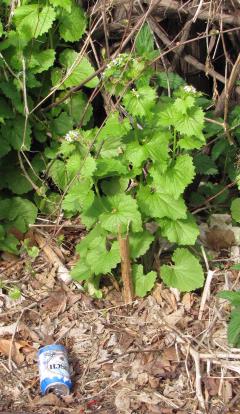
According the the USDA’s website on invasive and noxious weeds, Massachusetts lists 147 different plants from the tiny to the massive as invasive and or noxious. Some, like the Norway Maple (Acer platanoides), are staples of street side Massachusetts. Others have evocative common names that sent me scrambling to google image: sessile joyweed (dissapointing) and the Argentine screwbean (satisfyingly weird).
The USDA defines invasive plants as “introduced species that can thrive in areas beyond their natural range of dispersal. These plants are characteristically adaptable, aggressive, and have a high reproductive capacity. Their vigor combined with a lack of natural enemies often leads to outbreak populations.” I hope you’re feeling uncomfortable.
Some of these plants are genuine nuisances displacing native plants and therefore disrupting the ecosystem. Looking at gullies and other slow moving waterways in Massachusetts one sees lots of purple loosestrife choking the flow of water. Nothing around here eats purple loosestrife. This means it doesn’t go away.
Broadleaf cattail was the primary inhabitant of these waterways before loosestrife showed up. Lots of bugs and birds eat cattail. So do the muskrats, though they turn their noses up at loosestrife. When a particular animal can no longer find its food source it may perish. The minks that eat muskrats can’t find as many to dine on. This sounds trivial, but what affects even the smallest and ugliest of creatures can work its way up through the food chain to the charismatic megafauna that only superstar scientists get to study.
Now before anyone labels me a speciesist, I don’t hate these invasive aliens. They are merely living out their biological imperative: eat and reproduce abundantly. Eventually, they will all get predators because something will evolve a way to eat them. Everything and everybody is delicious to somebody else (e.g. sea cucumbers — ick). The cattails may go away as may the beetles that feed on them, but nature will prevail and eventually come back into balance. The planet may lose some species in the process, but, ultimately, life will go on.
Invasive plants, though, aren’t just migratory. They tag along with a vector I’ll call “us.” We bring them the places we go. A particularly eggregious example is the European Starling, which was brought to the United States by the American Acclimatization Society in late nineteenth century. They wished to make sur ethat the United States had all the birds that appeared in Shakespeare’s plays. You may have noticed there are a few of them around now. The Tempest certainly feels more vivid because of them.
We’re the vector. Kind of like the Tse-tse fly is the vector for African Sleeping Sickness. That definition I quoted above, has an uncanny ring to it. We can fight the loosestrife and the Norway Maple, but as soon as they’re gone we will introduce something new. Eventually homeostasis in nature will return. The easiest way to restore homeostases might not be so comfortable for us jet-setting humans.


